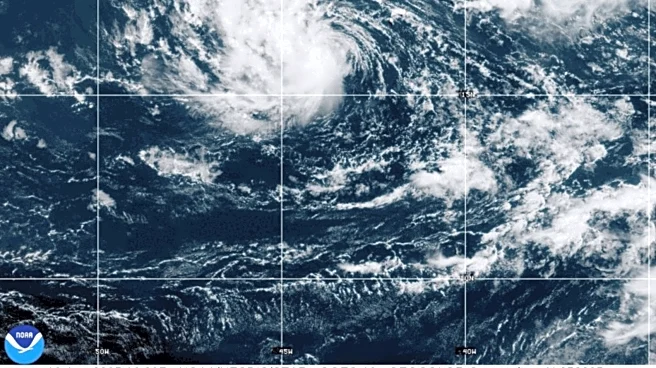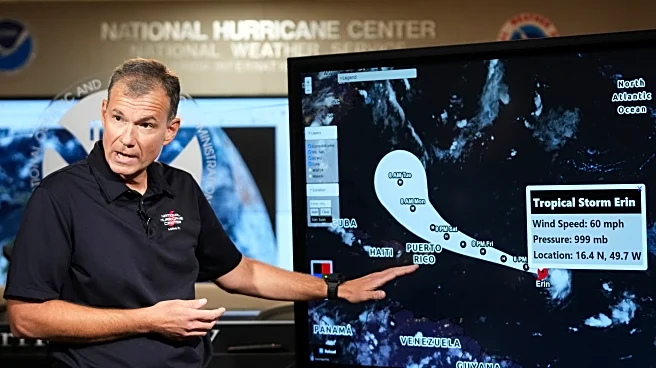What's Happening?
Tropical Storm Erin is advancing towards the northern Caribbean, prompting officials to issue warnings about heavy rains and dangerous swells. The National Hurricane Center in Miami reports that Erin is expected to remain over open waters, moving north-northeast of islands such as Antigua and Barbuda, the U.S. and British Virgin Islands, and Puerto Rico. Currently, Erin is located approximately 890 miles east of the Northern Leeward Islands, with maximum sustained winds of 60 mph, moving west at 17 mph. Forecasts predict Erin will become a hurricane by Friday and strengthen into a Category 3 storm by late Saturday, marking the first major storm of the season. There is uncertainty regarding the potential impacts Erin may have on the Bahamas, the east coast of the United States, and Bermuda.
Why It's Important?
The approach of Tropical Storm Erin is significant as it poses potential threats to the Caribbean region, including heavy rainfall, strong winds, and dangerous sea conditions. These weather events can lead to flooding, property damage, and disruptions to daily life and economic activities. The storm's intensification into a Category 3 hurricane could further exacerbate these impacts, particularly for coastal communities. Additionally, the uncertainty surrounding Erin's path highlights the need for preparedness and vigilance among residents and authorities in potentially affected areas, including the Bahamas and the U.S. East Coast.
What's Next?
As Tropical Storm Erin continues to intensify, meteorologists and officials will closely monitor its trajectory and potential impacts. Residents in the northern Caribbean and other areas at risk are advised to stay informed through official channels and prepare for possible severe weather conditions. The National Hurricane Center will provide updates on Erin's development and projected path, which will be crucial for decision-making regarding evacuations and emergency responses.












